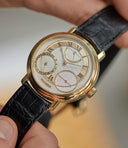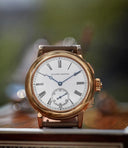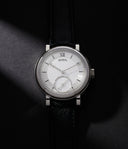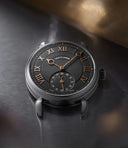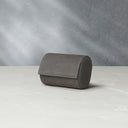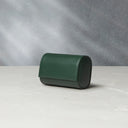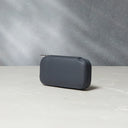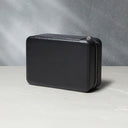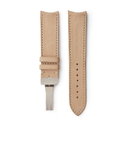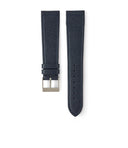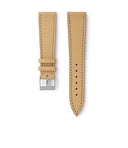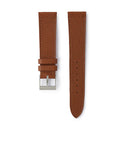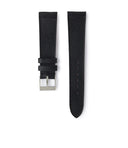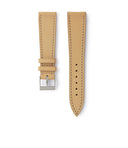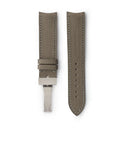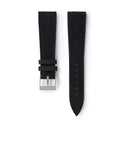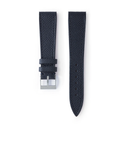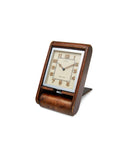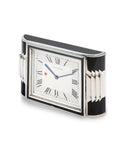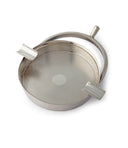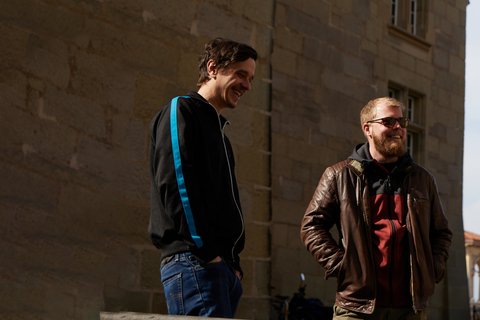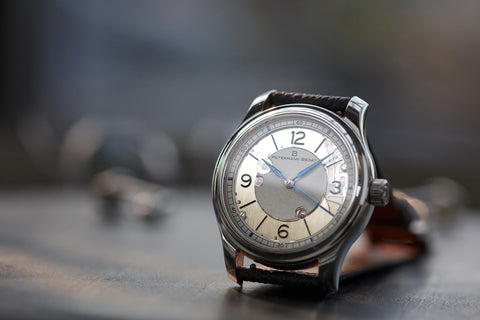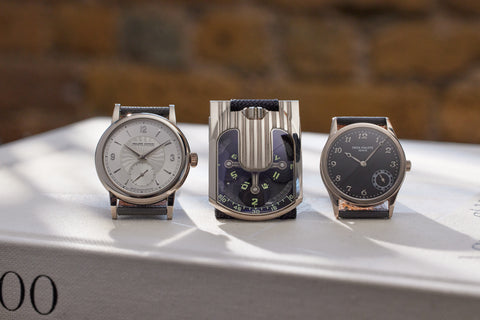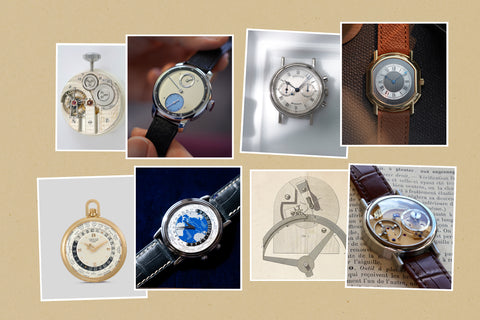Gaël Petermann and Florian Bédat’s history goes back to when the two aspiring watchmakers met as students at the Ecole d'Horlogerie de Genève. When Petermann went on to learn his craft at the house of A. Lange & Söhne, Bédat found his way back to him, joining him at the manufacture in Glashütte after a stint with Harry Winston. Their complementary visions made them inseparable and when they felt the pull of home, they moved back to Switzerland and began on the path to independence by honing their craft in restoration.
Petermann and Bédat set up their workshop in Renens, next door to Dominique Renaud (of Renaud et Papi), with the experienced watchmaker helping the duo design their first manually wound calibre with deadbeat seconds that would become the basis for the Reference 1967. The reference was a statement of intent – it was shaped by watchmakers’ decision to eschew a simpler path in pursuit of a higher echelon in concept as well as in design and finishing. The watch was awarded the Horological Revelation prize in 2020 by the Grand Prix d’Horlogerie de Genève (GPHG).
In the seven years since they started creating under their own names, the watchmakers have produced fewer than 30 pieces. Even within this small output, this watch is exceptional. While the brand has made the 1967 in white and rose gold, creating 10 examples of each, this is part of the second series in titanium, and featuring a bright splash of blue that marks the versatility of the design. The pair plan on making just 25 examples of this second series.
The central island of the dial, wearing a frosted finish in a vibrant blue and with hand-bevelled edges, is surrounded by a sapphire moat whose transparency reveals the depths of the keyless works of the calibre 171 and the baseplate. The alpha-style hands have a rounded profile, achieved by manual finishing. The seconds hand is a simple pointer with the signature kite-shaped counterweight.
The sapphire rim is adorned with a sector-style chapter, punctuated with a quarter of indices in a shade of contrasting black. A white chemin de fer track runs on the outer reaches of the dial against the same shade of blue, graduated by seconds at intervals of 10. The dial is the work of specialist concern Comblémine.
The titanium case measures 39mm across and 10.7mm tall, featuring a stepped bezel, that nods to classical watch designs. However, the bezel also has a rounded aspect at the part that meets the sapphire crystal. The midcase is also subtly rotund and integrates the lugs and their downturned trajectory seamlessly. The crown is substantial and knurled, adding a pleasing haptic dimension to the visual feedback of seeing the gears of keyless works turning on the dial side when winding the watch.
Through the sapphire crystal is visible the finely finished, manually wound calibre 171. The movement features a deadbeat second mechanism based on an anchor system. This takes pride of place, crowning the three-quarter-style bridge. As the fourth wheel of the going train rotates, so does the ratchet wheel atop it, locking and unlocking the double-sided, arrow-tipped pallet fork. The motion is transferred through to the next spring-loaded ratchet wheel, which advances the second hand in one-second increments. It pays homage to a seconde morte architecture devised by Robert Gafner, an instructor at La Chaux-de-Fonds Watchmaking School in the 1940s.
According to Petermann and Bédat, they chose to attempt this because they wanted to make a watch that wasn't too complicated, but would also stand out from the other independents at the time. "Our aim was to reach real collectors. During the design process we really wanted to show the deadbeat mechanism because it's usually tucked under the dial – in fact, our first iteration had a closed dial."
The pair places great emphasis on designing every single component that goes into the watch, saying: "Although the watch is difficult to regulate, we knew we could do something interesting with the deadbeat seconds anchor in the centre. We also knew we wanted to have a large bridge, for the Geneva striping. Coming from the world of antique watch restoration we have always admired these pocket watches with large Geneva stripes."
The large balance wheel bridge is topped by a black polished swan neck regulator, with the same finishing applied to the tip of the escapement bridge. The Côtes de Genève flows from one bridge to the next, the ebb of the waves seemingly uninterrupted. The bridges atop wear a frosted appearance, providing pleasing visual contrast. All the bevelled edges of the bridges are polished by hand, as are the countersinks on jewels and black polished screws.
When asked about their plans and the experience of creating the movement across their first and second series, the pair had this to say: "We built a solid team and developed assembly processes that we didn't necessarily have. At the beginning, each watch was assembled as a prototype, but over time we put in place processes that we will use in the future to improve production and quality."
A Collected Man is an authorised retailer for Petermann Bédat. While all our allocations are currently spoken for, if you would like to register your interest in this brand, please get in touch with one of our specialists.
If sold within the United Kingdom, this Petermann Bédat 1967 Second Series will be subject to 20% VAT
































































































